
Triumph Speed 400 First Ride Review: India’s Best 400cc Naked?
- Jul 14, 2023
- Views : 5359


The new Royal Enfield Guerrilla 450 is a neo-retro roadster based on the Himalayan 450 platform. It shares quite a few things with the Himalayan, such as its engine, most of the chassis and even features. But there are some key differences that make the Guerrilla feel like a completely different bike - one that’s clearly more road-focused and a lot more accessible to more people than the Himalayan. We got a chance to spend a day riding the Guerrilla on some lovely hill roads outside of Barcelona, Spain, and here’s what we think of the bike.
While the Guerrilla looks like a proper roadster, with its low stance and 17-inch alloy wheels at both ends, it does share a few design elements with the Himalayan 450. For example, it has the same LED headlight, although on the Guerrilla, it’s mounted much lower and without a windshield above it. And even though the Guerrilla’s fuel tank looks similar to the Himalayan’s when observed from the top, it’s actually much shorter in height - almost flat, and has a much smaller 11-litre fuel capacity. Plus, there are no luggage racks on the tank, making it look really clean. While the centre and tail panels are largely borrowed from the Himalayan, the Guerrilla comes in some really interesting and bright colour schemes, which makes it stand apart. There are five colours to choose from - Smoke Silver, Gold Dip, Playa Black, Yellow Ribbon and Brava Blue. The Brava Blue is the most eye-catching colour on offer thanks to its white paint and bright, metallic blue accents. The Yellow Ribbon (pictured here in most of the shots) looks good, but has only a few purple accents that keep it from looking like a ‘kaali-peeli’ Mumbai taxi. The Playa Black probably looks the coolest with its black tank with yellow and red highlights - a throwback to the John Players racing liveries of the past.
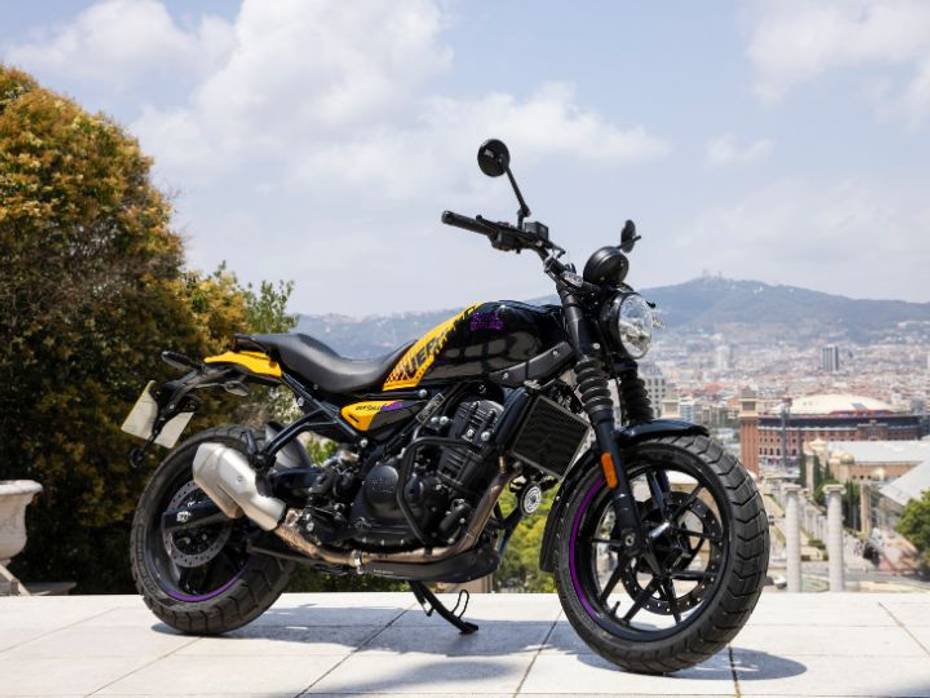
Powering the Guerrilla is the same Sherpa 450 motor from the Himalayan. This 452cc liquid-cooled, 4-valve, DOHC, single-cylinder motor is unchanged between the two bikes and makes 40.02 PS @ 8000rpm and 40 Nm @ 5500rpm. What has changed is the throttle mapping. In the initial 10 or so degrees of throttle travel, the engine’s response feels quite easygoing, almost the same as the Himalayan’s. But open the throttle further and the Guerrilla feels a lot more aggressive, and a lot more fun, almost egging you on to keep the revs up and the speeds high. On the winding hill roads outside Barcelona, the Guerrilla provided endless fun. And although this might sound like a strange thing to say, the Guerrilla’s engine almost feels like a Royal Enfield take on KTM 390 Duke’s mad motor - quick and revvy, but held back enough to still feel like a Royal Enfield. We believe that the Guerrilla should be slightly quicker to 100kmph than the Himalayan, which is no mean feat since the Himalayan is already quite quick (0-100kmph in 6.9 seconds in our road test), but that’s mainly because the Guerrilla is 11kg lighter.
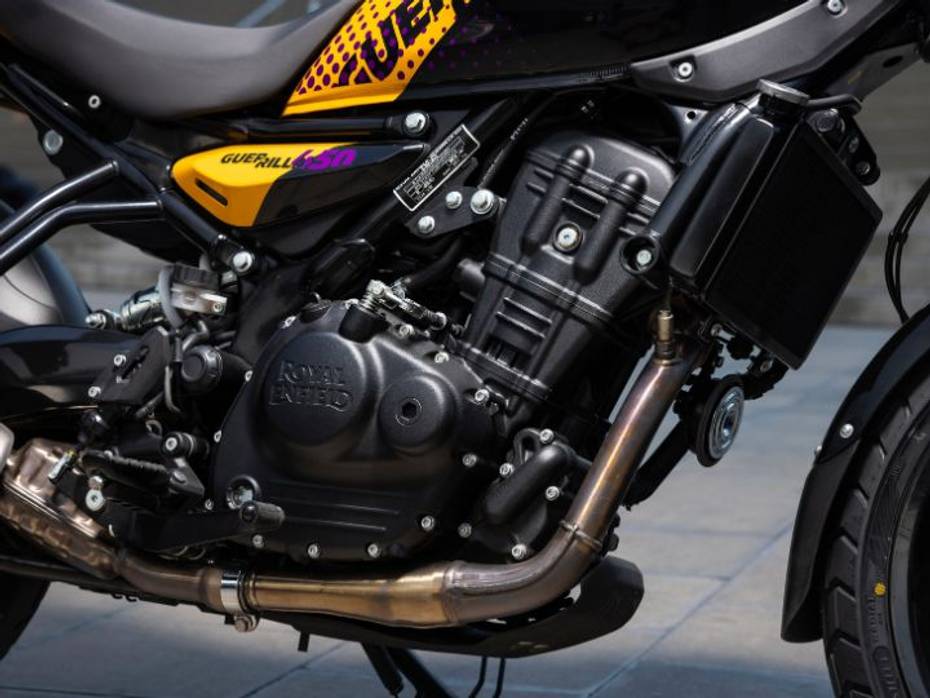
The 6-speed gearbox on the Guerrilla is the same as that on the Himalayan, and even the gear ratios are identical. But the Guerrilla runs a smaller 45-tooth rear sprocket (as opposed to the Himalayan’s 47-tooth sprocket), giving it slightly taller overall gearing. This does give the Guerrilla an easier highway cruise. In 6th gear at 100kmph, the engine is ticking over at 5000rpm (a couple of hundred rpm lower than the Himalayan) and at this speed, the motor feels really refined. Even the gearbox is decently slick, and didn’t have a single mis-shift throughout our ride. That said, the motor isn’t completely vibe free. You have some vibrations at lower rpm, which do reduce as you go faster, but you will feel a slight buzz near the top-end. The slight harshness you get on the Himalayan form 5500-6500rpm is here as well, but doesn’t feel as pronounced.
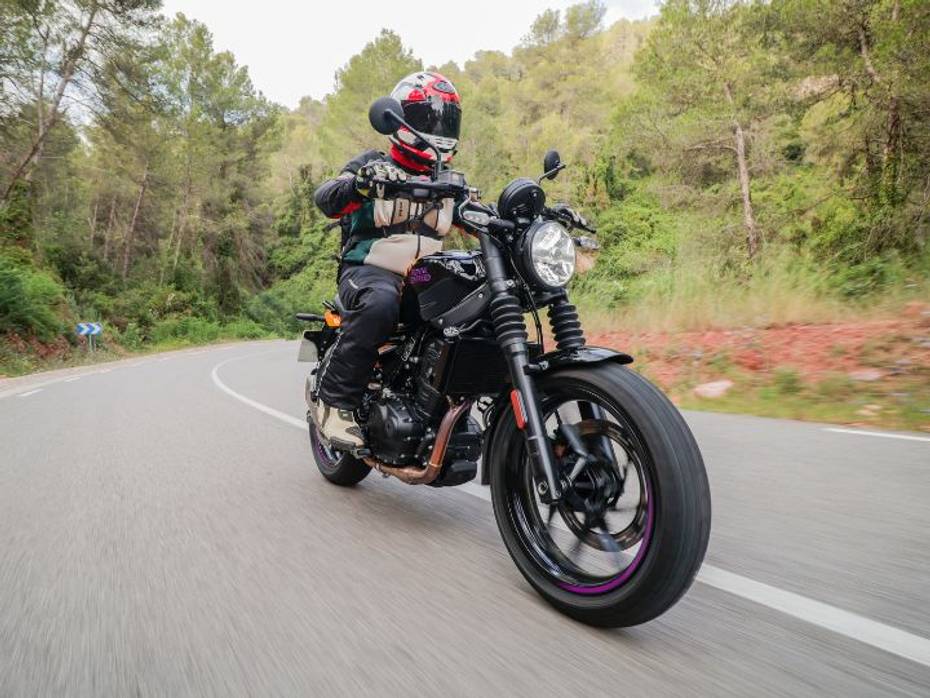
the automobile community
RE claims that the Guerrilla delivers a mileage of 29.5kmpl in the WMTC cycle, which is 1kmpl more than the Himalayan. Since the Himalayan delivered 29-31kmpl in our road test in Pune, we believe the Guerrilla should be able to easily manage 32-33kmpl.
The Guerrilla’s chassis has been derived from the Himalayan’s with some key differences. It’s a bit shorter in length and a bit narrower at the front for packaging reasons. But the big change is the rake angle, which has been pulled in by 4-degrees, giving the Guerrilla a 27mm shorter trail. That combined with the shorter swingarm gives the Guerrilla a wheelbase that’s 70mm shorter than the Himalayan. Still at 1440mm, it’s much longer than something like the Triumph Speed 400. Despite the long-ish wheelbase and the chunky radial tyres (120/70 R17 front and 160/60 R17 rear - the widest tyres on any made-in-India bike), the Guerrilla feels really nimble. Quick direction changes feel almost effortless and even when leaned over, the Guerrilla inspired plenty of confidence. It’s only when you push the bike really hard do you start feeling the slight lack of edge grip from the block-pattern Ceat tyres, but under most conditions and for most riders, there’s plenty of grip on offer.
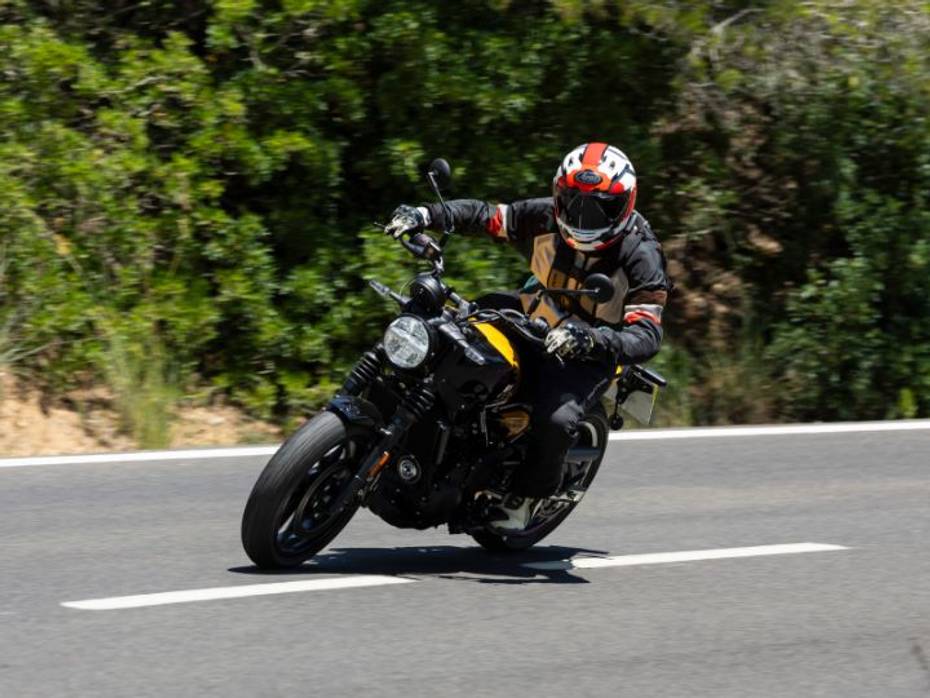
The 310mm front disc (10mm smaller than the Himalayan) and 270mm rear disc brakes provide decent feel and plenty of stopping power when you pull the lever in hard. In fact, through the twisty roads we were riding on, I had no problem trail braking into corners without once feeling that the brakes were not enough, or too much either. Dual-channel ABS comes as standard, but unlike on the Himalayan, here you can’t switch off the rear ABS.
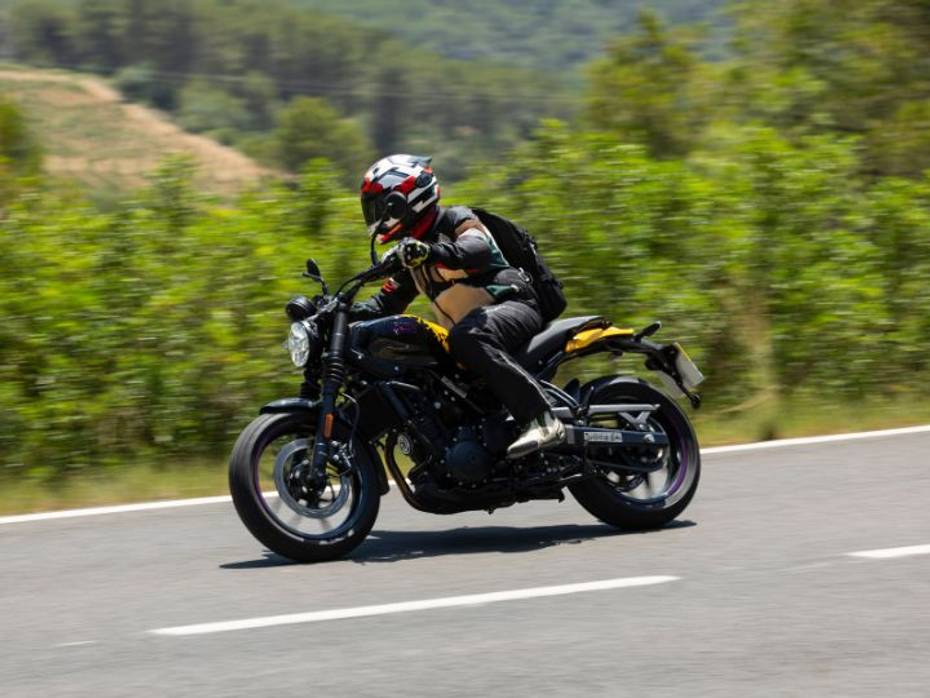
In terms of suspension, the Guerrilla gets a conventional 43mm telescopic fork and a linked preload-adjustable monoshock with 140mm and 150mm of travel respectively. The 169mm of ground clearance, although not as massive as the Himalayan’s, should be more than enough to take on any roads. While we really couldn’t test out the Guerrilla’s ride quality on the beautiful tarmac outside Barcelona, on the few bumps we did encounter, the suspension felt a bit on the stiffer side - sporty, but not hard. How it handles Indian roads is something we’ll have to see once we get the bike for a proper road test in Pune.
With a kerb weight of 184kg, the Guerrilla is no featherweight, but still a lot easier to manage than its adventure sibling. But what makes the Guerrilla so approachable is the super low seat height of just 780mm - 10mm lower than that of the Hunter 350! That, combined with the bike’s narrow profile, ensures that even riders as short as 5’5” should have no trouble getting both feet on the ground.

The Guerrilla also gives riders a proper roadster riding stance with its higher and more rear set foot pegs and lower handlebar. It feels aggressive enough when you want to start pushing hard in the corners, but is upright enough for daily city riding. The single-piece seat also feels comfortable enough and spacious enough to accommodate large or tall riders. We can’t attest to pillion comfort though - this is something we’ll address in our road test.
The Guerrilla is surprisingly feature-packed for a retro roadster. The top two Flash and Dash variants get the same 4-inch colour TFT screen as the Himalayan. This screen is really information packed, and also gets Wi-Fi connectivity to your smarphone, along with Google Maps navigation. But just like on the Himalayan, you need to keep your phone unlocked with the Royal Enfield app running in order to cast said maps on the screen. The base Analogue variant of the Guerrilla gets the semi-digital instrument cluster from the Super Meteor 650, which actually looks more appropriate on the bike, given its retro-roadster intentions. This cluster offers no connectivity options, but if you need navigation, you can opt for Royal Enfield’s Tripper pod on this base variant. All variants get two riding modes - Performance and Eco, which change the throttle response. All variants also get a USB Type-C charger under the handlebar.
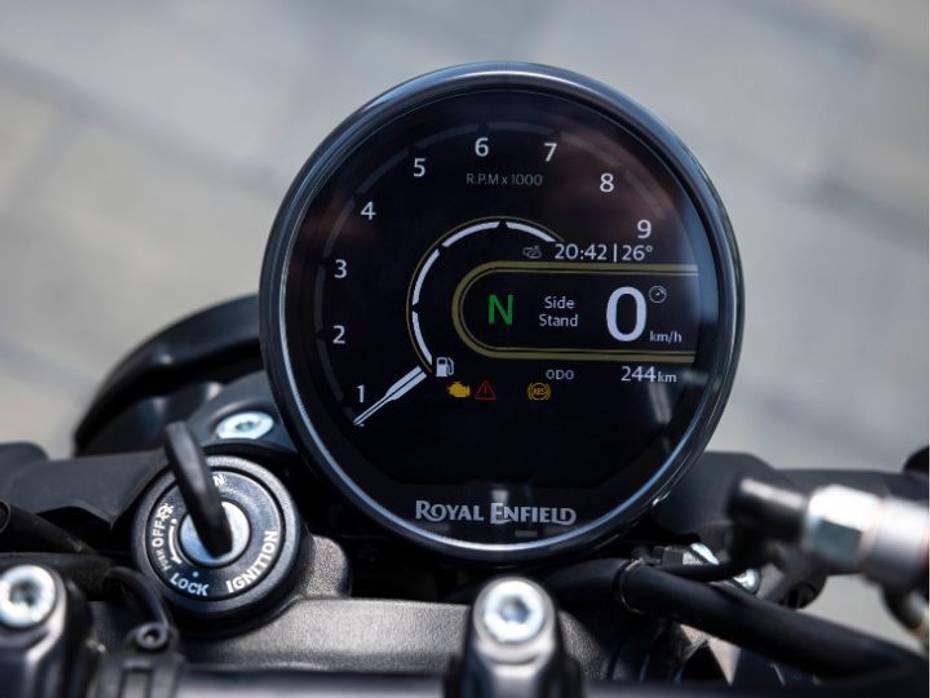
With prices between Rs 2.39 lakh to Rs 2.54 lakh (ex-showroom Delhi), the Guerrilla is taking the fight straight to something like the Harley Davidson X440. In fact, it’s just slightly more expensive than the Triumph Speed 400. The excellent pricing combined with the fact that the Guerrilla feels really accessible to new riders and still engaging enough for more experienced riders, makes it a very easy bike to recommend for anyone in the market for a neo-retro roadster.
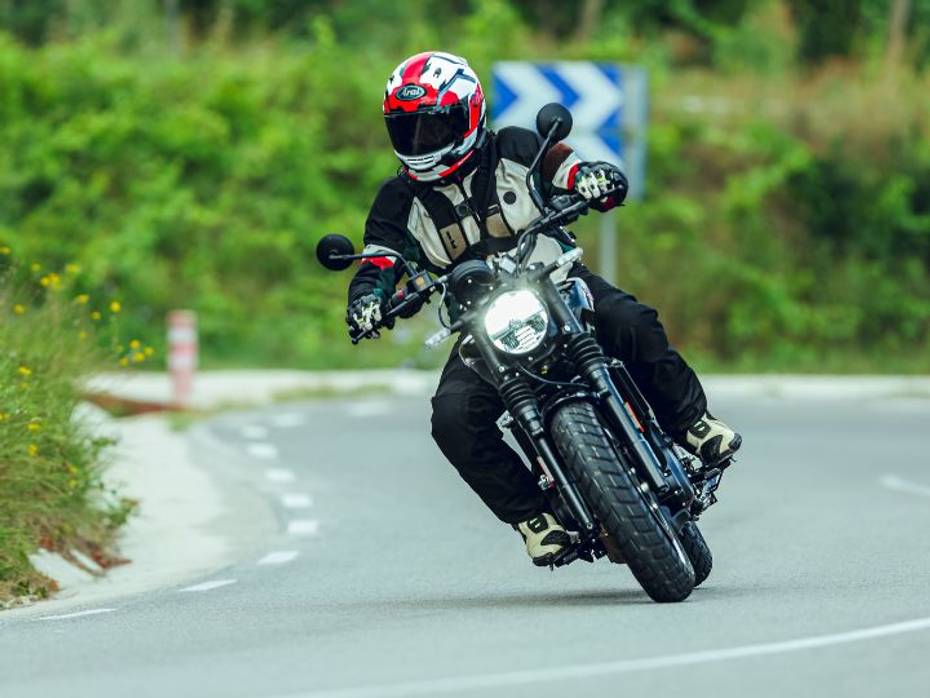
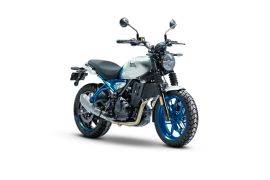

Triumph Speed 400 First Ride Review: India’s Best 400cc Naked?

Royal Enfield Meteor 350 Long-term Review: Change Of Hands At 13,410km

Royal Enfield Classic 350: 14,000km Long-Term Review

Royal Enfield Bear 650 Review: Is It Really A Scrambler?

Riding The Bear 650 To India Bike Week 2024: A Trip of Many Firsts

2023 Royal Enfield Bullet First Ride Review: Made Like A Gun, Goes...

Royal Enfield Guerrilla 450 VS Triumph Speed 400 VS Hero Mavrick 440...
 Triumph Speed 400
Triumph Speed 400
 Royal Enfield Meteor 350
Royal Enfield Meteor 350
 Royal Enfield Scram 411
Royal Enfield Scram 411
 Royal Enfield Classic 350
Royal Enfield Classic 350
 Hero XPulse 210
Hero XPulse 210
India's largest automotive community
 Royal Enfield Classic 350
Rs. 1.93 Lakh
Royal Enfield Classic 350
Rs. 1.93 Lakh
 Royal Enfield Hunter 350
Rs. 1.49 Lakh
Royal Enfield Hunter 350
Rs. 1.49 Lakh
 Royal Enfield Continental GT 650
Rs. 3.19 Lakh
Royal Enfield Continental GT 650
Rs. 3.19 Lakh
 Royal Enfield Bullet 350
Rs. 1.73 Lakh
Royal Enfield Bullet 350
Rs. 1.73 Lakh
 Royal Enfield Meteor
Rs. 2.05 Lakh
Royal Enfield Meteor
Rs. 2.05 Lakh